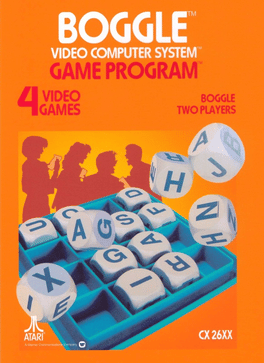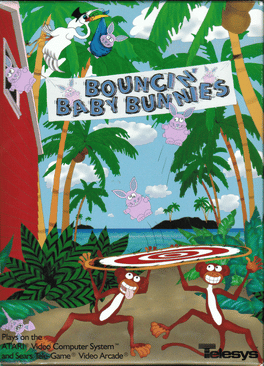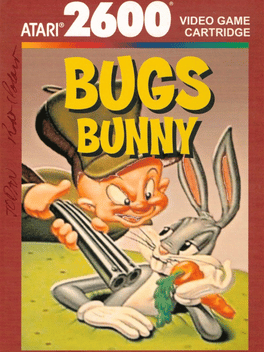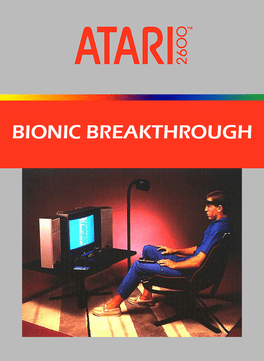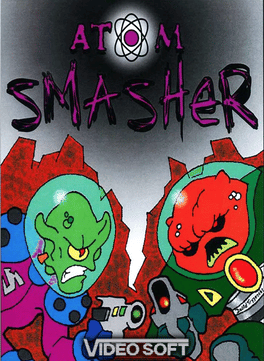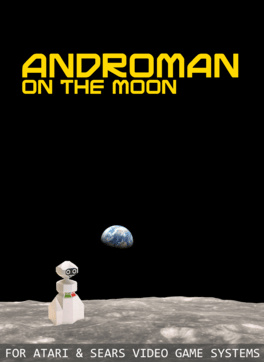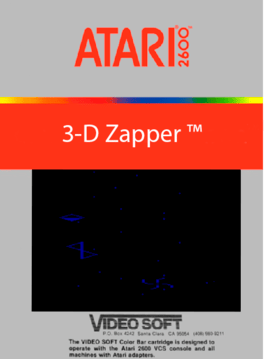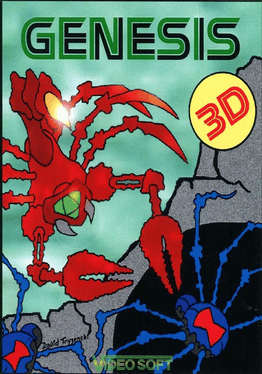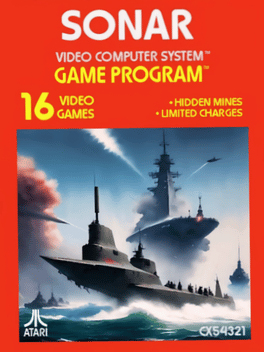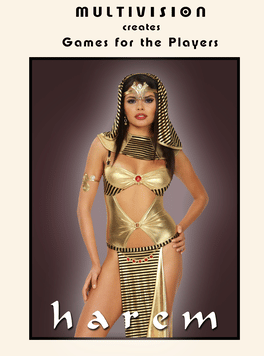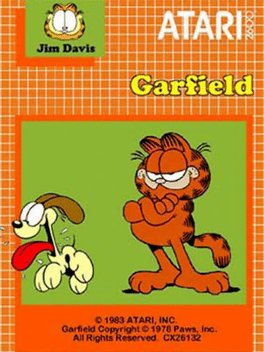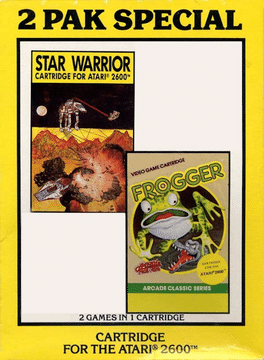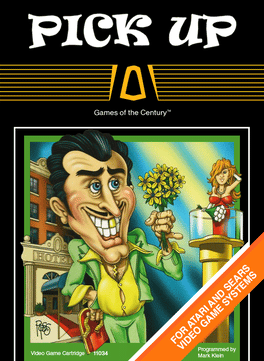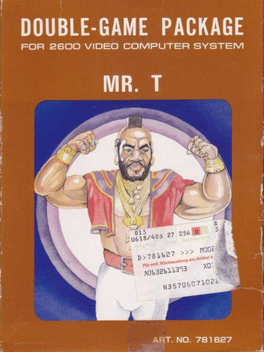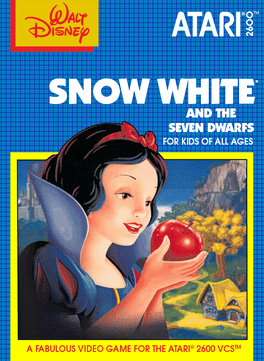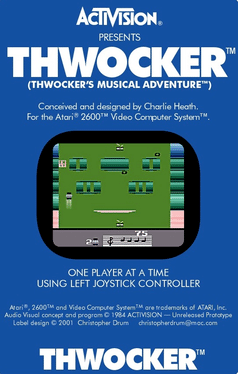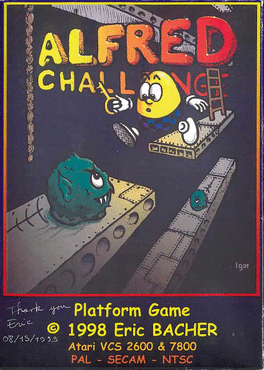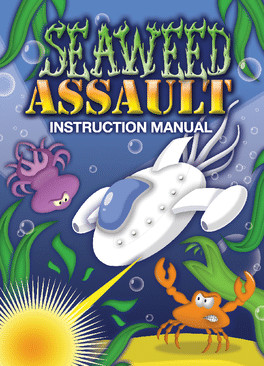Newest Atari 2600 Games - Page 32
-
Boggle
Boggle is an unreleased game for the Atari 2600 programmed by David Crane while he was still working at Atari. In Boggle, which is based on the popular word game of the same name, you must form as many words as possible from a random 4x4 grid of letters. The 2600 version of the game is for two players only, and each player can form a maximum of eight words (likely due to memory constraints of the 2600). The game appears to be fairly close to completion, although there are some glitches, such as all the letters not appearing in the grid right away when you start the game. Still, it's an interesting prototype and it's unknown why Boggle was not completed and released. -
Bouncin' Baby Bunnies
Zounds! Coco the crazy monkey is in quite a pickle this time! Dr. Storkus Z. Hopperdropper (Storky, to his friends) has gone a bit mad, and is dropping baby bunnies from the sky! In fact, it's raining bunnies! What's a crazy monkey to do? Get help, that's what! Coco and his brother Haggis are out to catch the bunnies and bounce 'em to safety. It's monkey business, for sure, and they need your help, so grab that trampoline, and start Bouncin' Baby Bunnies!! A copy of the nearly complete game surfaced in the collection of a former Telesys employee in 2007. According to programmer Alex Leavens, Bouncin' Baby Bunnies is based off the old Bugs Bunny cartoon, where the stork mistakenly delivers Bugs to a gorilla family and they think he's their baby. The only known prototype of Bouncin' Baby Bunnies seems to be fairly complete, but still needs some tweaks and bug fixes. The game didn't get released because of the collapsing game market of 83/84. According to the former Telesys employee: 'Bouncin' Baby Bunnies came too la -
Bugs Bunny
Bugs Bunny is a cancelled game based on the Looney Tunes series for the Atari 2600. The game features Bugs Bunny as he tries to hide from Elmer Fudd. -
Frogger
An exclusive port of Frogger for the Atari Flashback series. It is based on the Atari 2600 architecture. -
Bionic Breakthrough
Bionic Breakthrough was one of only two games written to be used with the MindLink controller, a headband that the player wore on his head and plugged into the joystick port. The idea was that the MindLink's sensors would pick up any facial movements or muscle twitches the player would make. The problem was that the MindLink didn't work very well in initial test runs, and even when it did worked players would complain of headaches and dizziness from twitching their face. Bionic Breakthrough is really just Super Breakout with a title screen. It's unknown if this was just supposed to be a demo to show what the MindLink could do, or if it was actually a standalone product. Before the game starts there is a screen where the word MindLink slowly scrolls to the bottom, this is for callibration. On this screen the player can move the text block left and right to make sure the Mindlink is working properly. Bionic Breakthrough was never released. -
Atom Smasher
A battle to the last atom! The Atomic Arena is where all sorts of nasty, burly life-forms come to contest each other in the galaxy's deadliest game! Armed with a regulation Atom Smasher Blaster, you must blast unstable atomic particles past your opponent and out of the arena, but if one hits you, it degrades your very atomic structure, and the results aren't pretty. But remember, someone else has the same goal... -
AndroMan on the Moon
Androman was a small white robot that would scurry about on a floor mat while the player controlled him using the Atari 2600. Androman also had a barcode scanner in his bottom that would read barcodes placed on the map so the 2600 (and the robot) knew where he was. Using a combination of the joystick and barcodes, the player could guide Androman around the floor mat and play various games. One of those games being Androman on the Moon. -
3-D Zapper
Unreleased game programmed by Todd Marshall. Within existing internal documents the given title is "3-D Zapper," though the prototype cartridge itself has an end label that reads merely "3-D Demo," while the PCB within features a sticker reading "3D Space" and a date of December 13, 1982. Internal documents describe the game briefly as follows: "This game contains the elements of a typical shoot-em-up spree game. The unique elements of this game are: (1) that the invaders perform erratic randomized dances in a three-dimensional field. (2) The 3-D operation of the gun. (3) The invaders themselves are particularly tailored to provide an exciting 3-D effect on the ATARI VCS." -
3D Genesis
Peace through superior firepower! In the far future, the planet is overrun with enormous, super insects, who fiercely battle each other for survival. You've chosen a side to fight for, and the enemy has been funneled into a deep crevice, but now you're outnumbered. You put their numbers to the test. They say the meek shall inherit the Earth, but how long can you defend it? This was originally planned to be 1 of 3 "3-D" games on Power-Play Arcade cart #1. A screenshot was shown in a catalog for Amiga's Power System, but no description was included. It was programmed by Dan McElroy and Jerry Lawson in 1983, shelved, and made available for limited release in 2010. -
Sonar
Sonar is a cancelled game for the Atari 2600. A prototype of the game was dumped on AtariProtos.com in March 2023. -
Garfield
Garfield is an unfinished video game that was developed for the Atari 2600. The game was never officially released due to the videogame crash of 1983, which resulted in the cancellation of many other games that were being produced by Atari, including another Garfield title. It is based on the popular comic strip of the same name. -
The Incredible Hulk
The Incredible Hulk was supposed to be a video game created by toy and game manufacturer Parker Brothers in 1983 for the Atari 2600. The release of The Incredible Hulk was scheduled for Autumn 1983. However, this period coincided with the video game crash of 1983 (following E.T.'s release in December 1982). During this crisis, numerous companies, including Parker Brothers, opted not to launch games that had already been developed for the Atari 2600. Consequently, The Incredible Hulk was never made available to the public. -
Pick Up
OK, here's the deal. If you want that lover of your dreams to get off their pedestal and go out with you, you need to present them with the right gifts. Then you can head over to the Love Nest Hotel to really score! You start with your lover of a pedestal on the left and various items floating above you. You must shoot each item once to acquire it. If an item starts flashing, shoot it next because after a short time, you'll lose a chance. If you shoot an item a second time, you will lose it and a chance. Lose all your chances and the game is over. If you collect all the items needed, head over to the pedestal then head off the screen to the right. Head to the door of the hotel and the hotel sign will say how many times you have scored. Now head left to start the next level. -
Thwocker
An unfinished Atari 2600 game that was later released as part of various Atari game collections and Microsoft's Game Room. The player controls a small man (or creature?) that does not stop rhythmically bouncing, though the player can control the height of the jumps. The object is to collect the correct musical note, displayed at the bottom of the screen, while avoiding floating musical instruments. Once the correct notes have been collected, a large note must be acquired near the top of the level. Grabbing that large note starts a song, during which the player can collect the remaining musical notes and instruments on screen for extra points. -
Seaweed Assault
A new game by AtariAge. Players have to collect seaweed whilst avoiding hazards.
